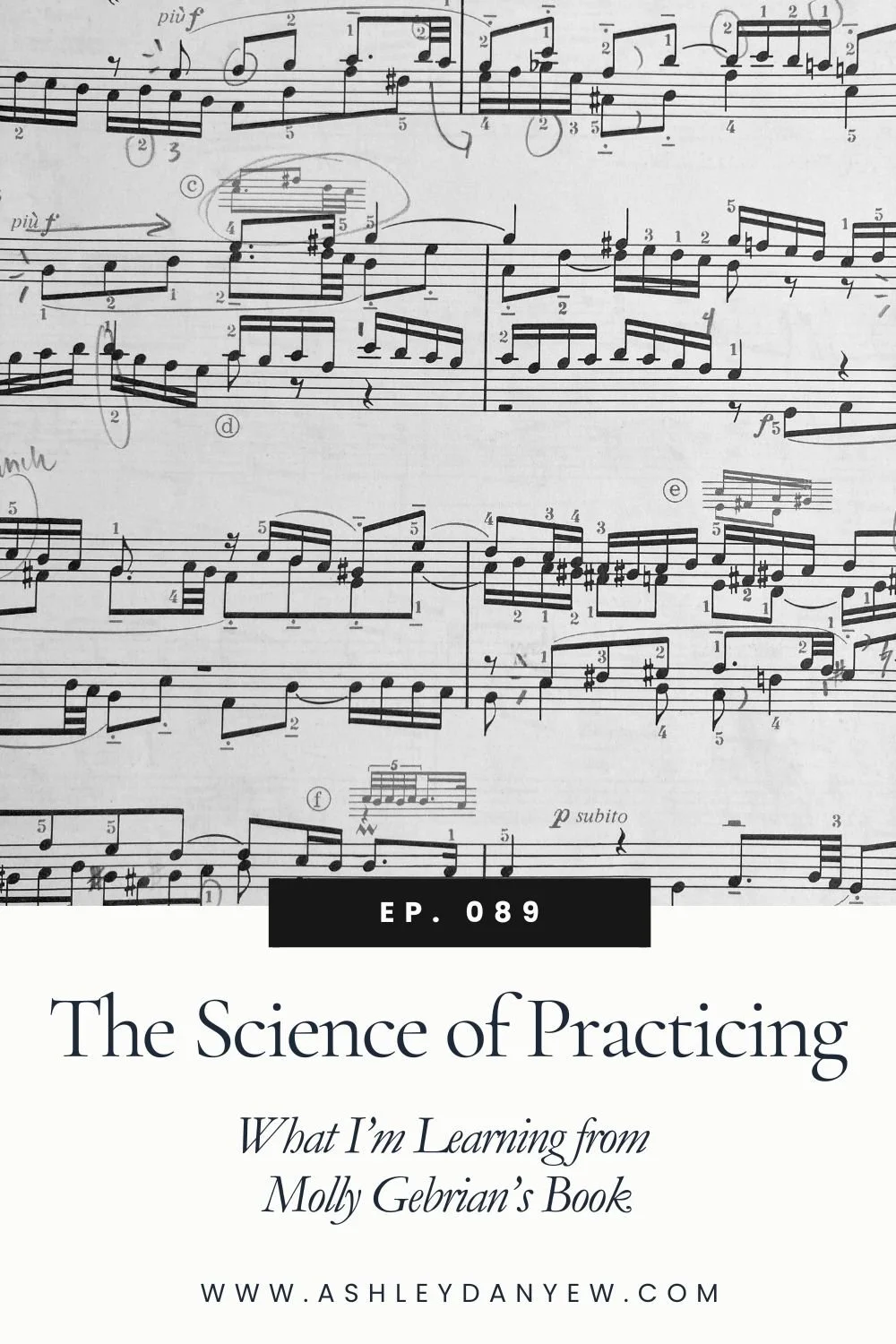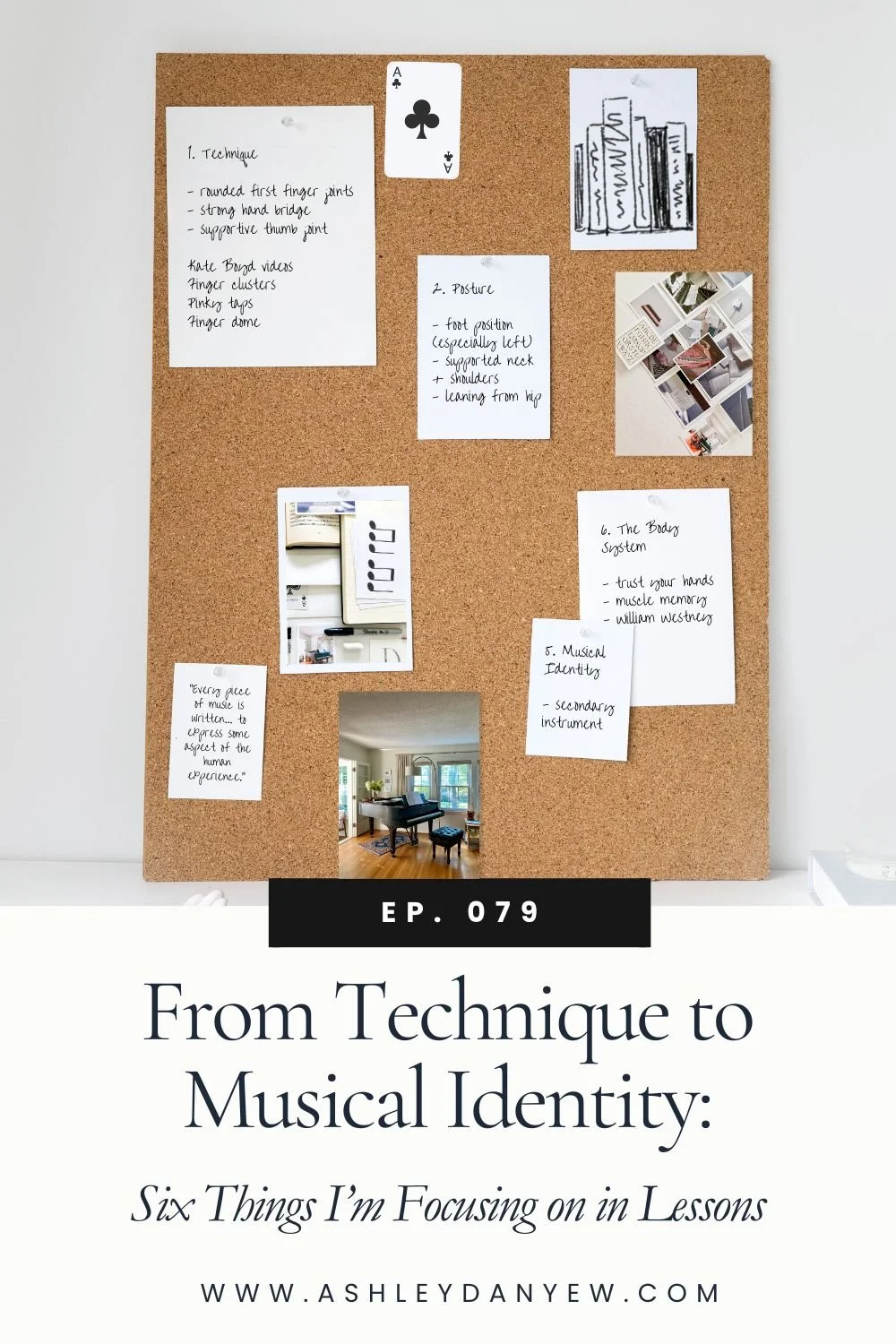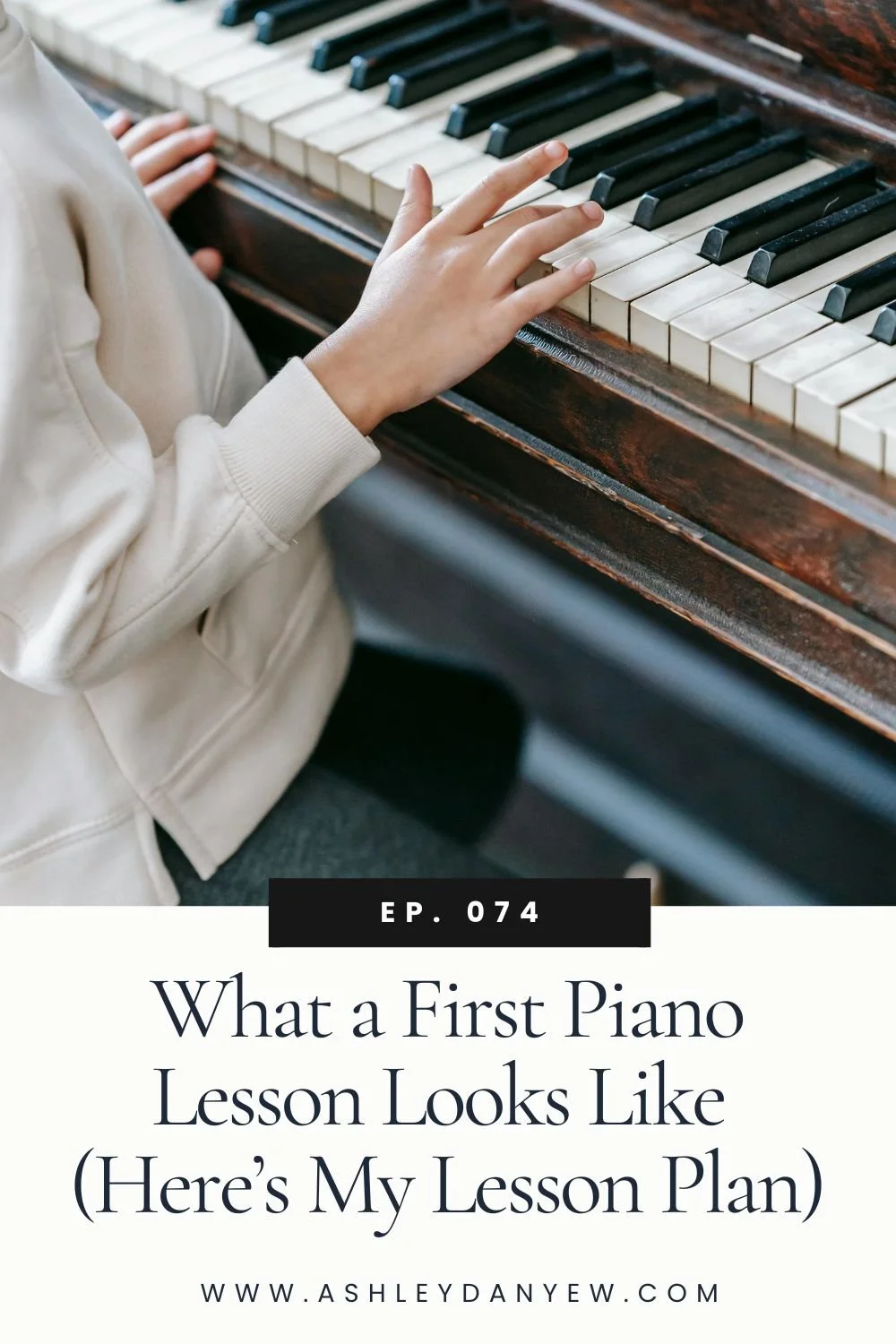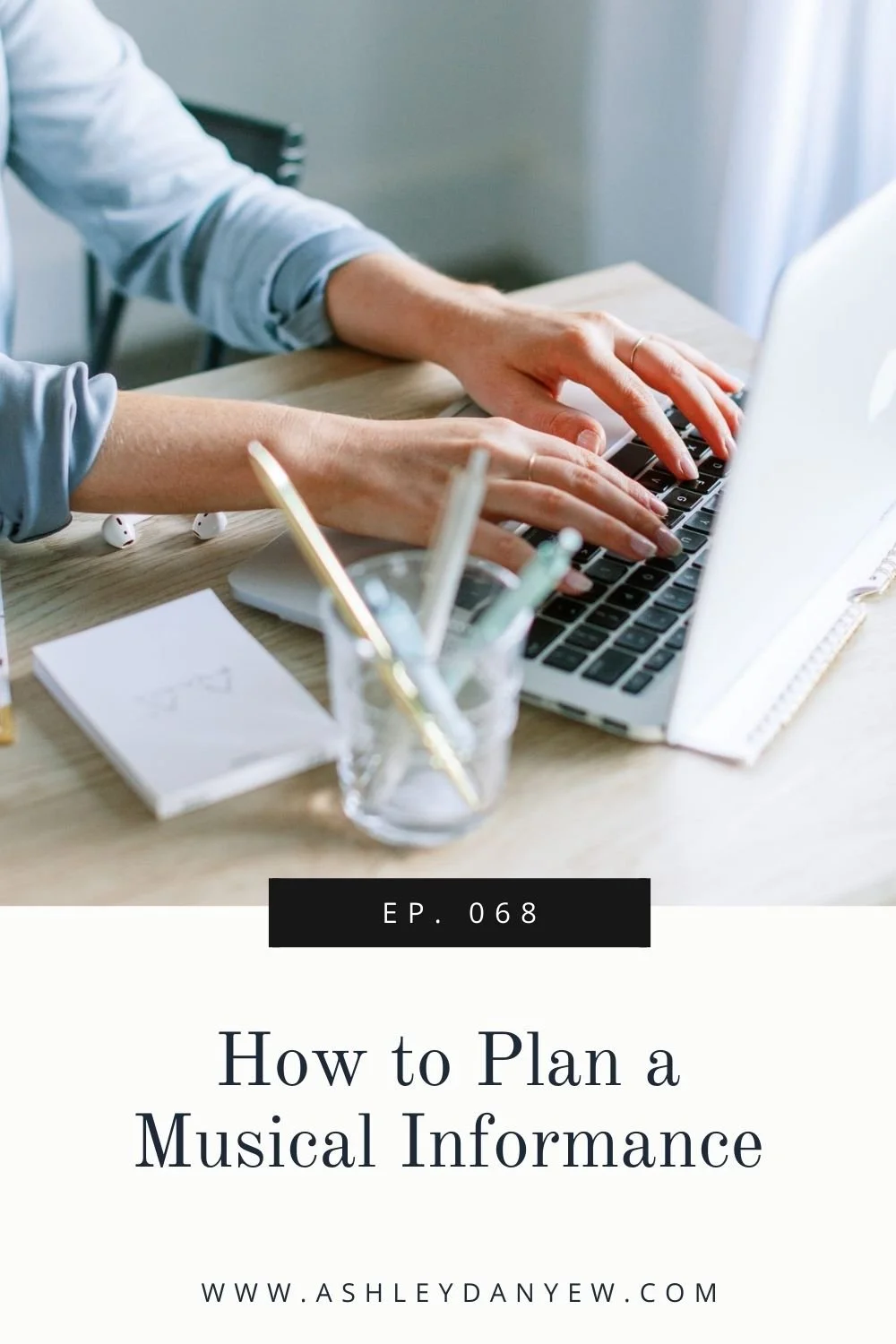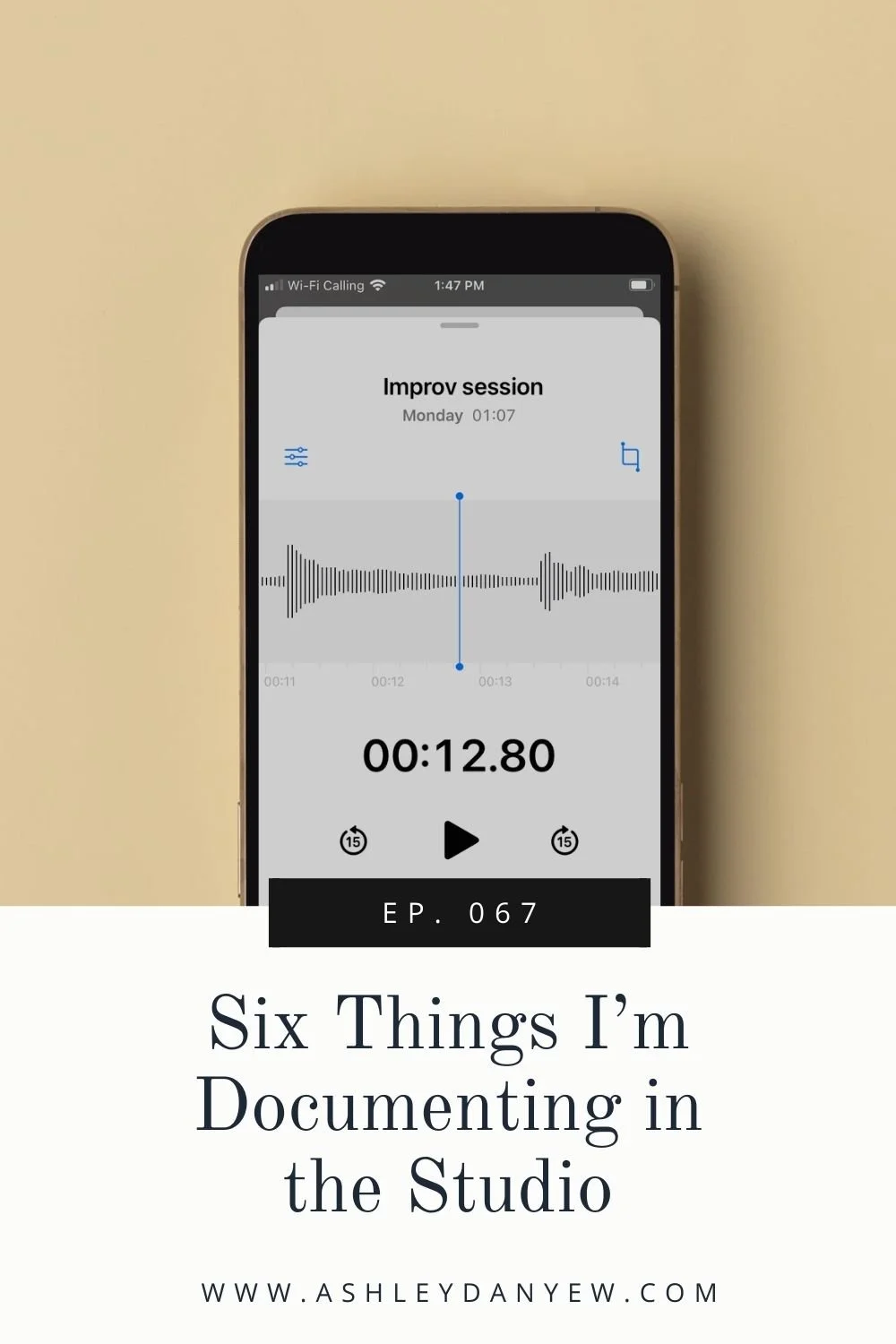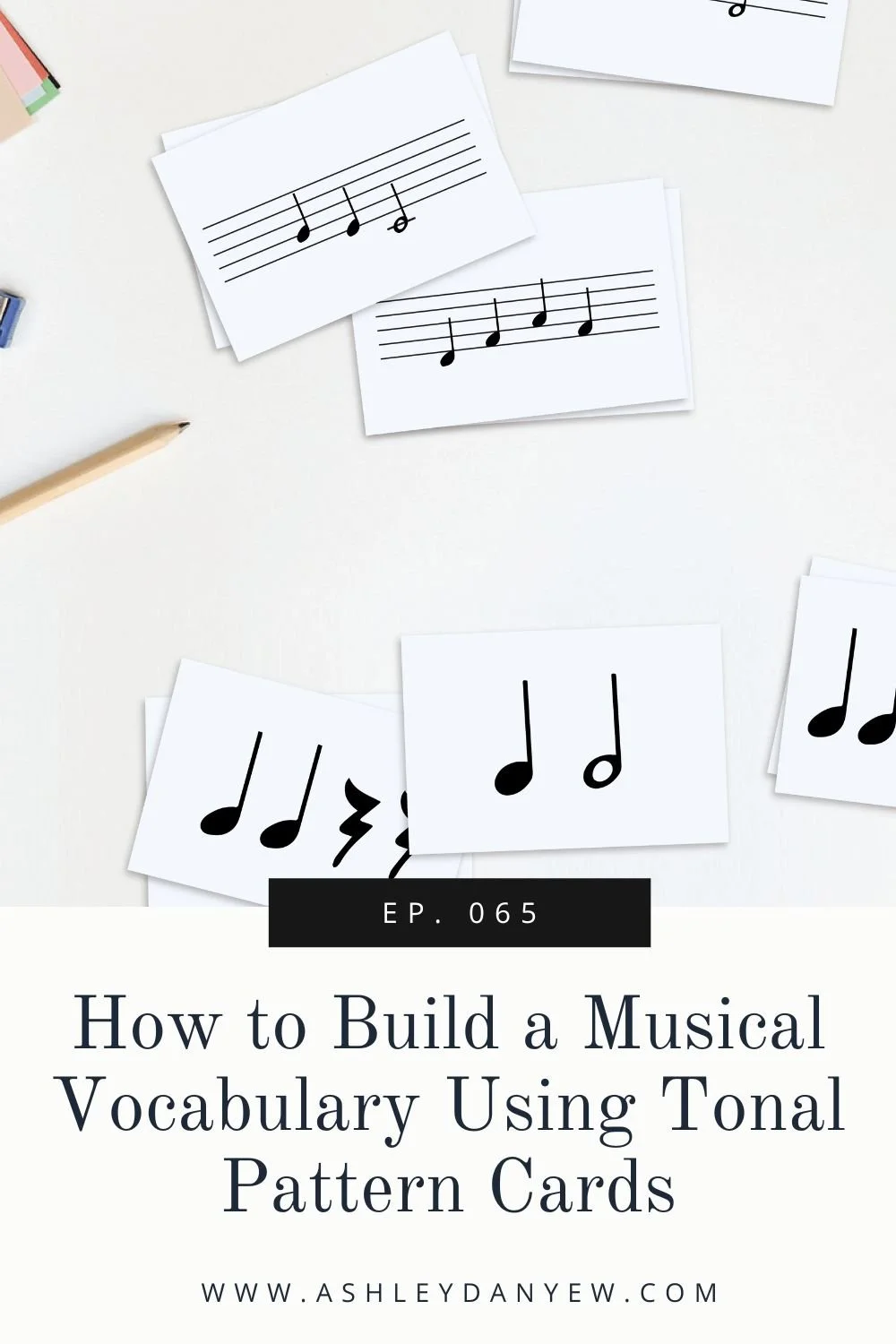Resources Mentioned
*Disclosure: I get commissions for purchases made through links in this post.
The Perfect Wrong Note: Learning to Trust Your Musical Self (William Westney)
Ep. 055 - Begin Again: The Case for Experimentation in Your Music Teaching
Are We Learning From Our Mistakes? Insights From William Westney's, "The Perfect Wrong Note"
Piano Pedagogy Research Laboratory at The University of Ottawa
Join the Musician & Co. Book Club (it's free!)
"What just happened?" I asked a 4th-grade student one Friday afternoon.
"I made a mistake," she said, looking down at her hands still resting on the keys.
"What is a mistake?" I posed, curious as to how she might answer.
She thought for a moment, then said, "It's when you do something wrong."
We talked about that for a minute—how sometimes mistakes happen innocently. Sometimes, a mistake is a way of getting our attention, a way for the body to say to the brain, "Wait! I don't really know this yet."
We listened for mistakes and inherent learning opportunities for the rest of the lesson. We talked about insecure fingers, uncertain rhythms, and risky leaps. We talked about how to practice and prepare these things, develop confidence, and be an observer while practicing at home.
This is the work of actively reframing how we see and respond to mistakes.
Earlier this year, I read The Perfect Wrong Note: Learning to Trust Your Musical Self by prize-winning pianist and pedagogue William Westney. (I mentioned it back in Ep. 055 as I was reading it.)
I enjoyed it so much that I made it our Musician & Co. Book Club pick for this quarter. I just published a book review on the Musician & Co. blog, sharing four practical insights for musicians and teachers and a few of my favorite quotes.
As I read this book, I found myself bringing some of these concepts into my studio to study and evaluate them in practice. Every few days, I had a new question I wanted to pose, a new response I wanted to incorporate into my language, or a new strategy I wanted to experiment with.
In this episode, I want to share some of these practical takeaways: how I'm integrating some of the ideas from Westney's book into my teaching, the questions I'm asking my students these days, and a reflection on how we approach mistakes in the music teaching and learning process.
5 Ideas From William Westney's "The Perfect Wrong Note" to Bring into Your Studio
1. Rethinking Warm-Ups
Do you start your practice sessions with warm-ups? Do you start every lesson with a warm-up or technique exercise?
Westney advocates for something a bit more casual. He described:
“Just as athletes warm up their bodies before an event, musicians need a good leisurely getting-reacquainted-with-the-instrument warm-up before attempting any sort of measurable result, such as a scale, arpeggio, or specific exercise.”
This can be things like playing long tones, dropping into a key and bobbing with each finger, or even improvising.
One small shift I'm making on some of my assignment sheets is to change the heading from "warm-ups" to "technique." This way, it's not assumed that the student should start with these exercises.
I also demonstrate that their practice sessions can look different each day by mixing up the order of activities in our lessons. Sometimes we start with an easy review piece; sometimes with sight-reading. other times with an improv activity or gentle warm-ups like those described above.
Dr. Gilles Comeau of the Music and Health Research Institute at the University of Ottawa has conducted research on this, as well. He recommends starting a lesson or practice session with technically-easy activities (e.g. not scales, arpeggios, or other athletic exercises). Instead, use scales and other technique exercises in the middle of the lesson or practice session, once the student is warmed up.
What could this look like in your studio?
2. The Problem with the 4th Finger
I loved Westney's quote about this: "Given the choice, the fourth finger would usually rather not play the piano!” I have shared this with most of my students now and it always brings a smile to their faces, especially if we've just encountered a moment like this in one of their pieces.
We've also done the exercise he described that highlights the 4th finger's dependency on fingers 3 and 5 (I knew this prior to reading the book but had forgotten about this exercise—such a great tangible example for students!). Westney describes it like this:
“Rest your hand on a table; open the hand and straighten out the fingers; place all the fingertips (fleshy part) on the table-top; fold the third finger under so that the entire second joint is pressed flat on the table; keeping the hand still, try to lift fingers 1, 2, 4, and 5 in turn. Three of them will lift easily, but the fourth finger feels paralyzed. Now try the same experiment folding only the fifth finger under.”
When the 4th finger has a critical moment—a key melodic feature, starting a phrase, or being part of a leap—I ask my students, "How can you prepare for this moment and give the 4th finger a boost of confidence?" If it's part of a scale line, I ask, "How can you use the 3rd or 5th finger to prepare and support the 4th finger?"
We're becoming more aware of it for performance purposes and more intentional about it in our preparation of a new piece. For non-pianists, is there something like this that you encounter on your instrument that you want to make sure students are mindful of in their practicing?
3. Practicing Opposites
I mentioned this briefly in the last episode. It seems counterintuitive to practice something the opposite of how it's written, but Westney indicates this can be a powerful practice strategy for securing fingering, maintaining evenness, and controlling dynamics, among other things.
“If the music is slow, practice it fast, with a certain recklessness. If it calls for great evenness, make it enthusiastically uneven and vary the patterns.”
We've been using this for scales, Alberti bass patterns, dotted rhythms, zigzag patterns, sequences, and more. How could you use this strategy in your teaching this week?
4. Creative Interpretation
I loved Westney's idea of involving the student in the creative interpretation of a piece. He described:
“Ask the student to brainstorm three different approaches to the two phrases, each with a contrasting pair of personalities. See if the student can make you guess correctly what contrasts were intended—dreamy/insistent, lamenting/echoing, seductive/shy, for example.”
I asked one of my high-school students to do this recently with Schumann's "Of Foreign Lands and People," Op. 15, No. 1. It immediately gave her a greater sense of ownership in the piece and more personal investment in how she wanted to play each phrase.
What opportunities will you have this week to invite students to participate in the creative interpretation of a piece?
5. Performance Spending
As we approach recital season, I plan to introduce this concept to my students. Westney explained:
“Think of technical achievement as a sort of bank account. Each performance spends some money out of the account, and constructive maintenance work puts deposits back in.”
I think this will help students better understand the investment required to achieve musical mastery and performance success and maintain it in the weeks leading up to the recital.
How do you help students prepare for a confident performance without peaking too soon?
Summary
To recap, here are those five ideas once more:
Rethinking Warm-Ups: the idea of starting each lesson and practice session with a gentle reintroduction to your instrument
The Problem with the 4th Finger: the physical challenges inherent with this finger and how we can work to prepare and strengthen it
Practicing Opposites: the surprising strategy that may yield the greatest results in your practicing
Creative Interpretation: ways to invite your students into the process
Performance Spending: a great visual for understanding the relationship between performance and constructive maintenance
Have you read William Westney's book? If so, I'd love to hear what you think of these concepts and how this informs your teaching.
Also, if you're interested in more books like this, you might enjoy the Musician & Co. Book Club. It's free to join. Each quarter, we read a book about running your own business, the creative process, entrepreneurship, music teaching, or being a musician.
When you sign up, you'll be the first to know about our book picks each quarter, get reading plans and reflective questions, book reviews, and other reading-related news. Our next book club pick will be announced on July 1. Sign up here >>




